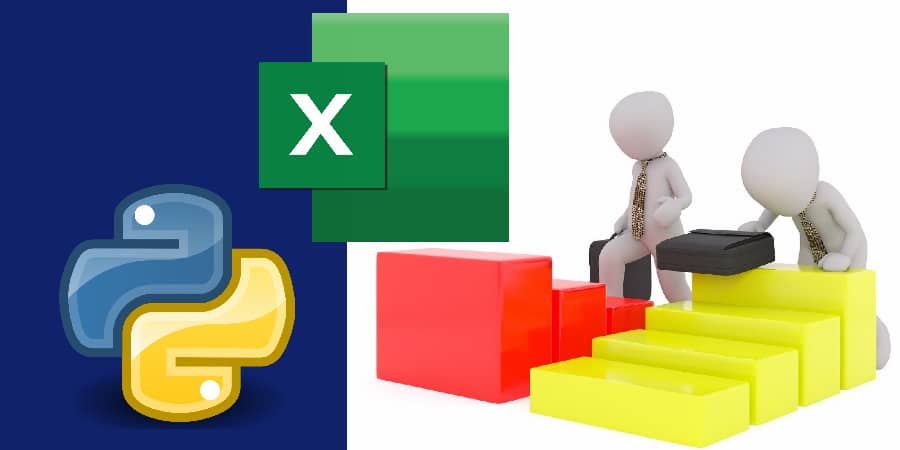
If you are reading this post right now, chances are you have stumbled upon that phrase “Financial Modeling” once or a couple of times. You probably got here because you were looking for information on it.
Well, today you figure out what it means and also, how Python can enhance your financial modelling skills significantly. Let’s start with the very meaning:
Financial modeling is a process of creating a mathematical representation of a real-world financial situation.
It involves the use of tools, techniques, and assumptions to forecast the financial performance and position of a business or an investment.
Financial modeling is a critical skill for professionals in the finance industry, allowing them to make informed decisions, assess the financial feasibility of a project, value a company, or estimate the potential returns and risks of an investment.
Meanwhile, Financial models are widely used in various fields, including corporate finance, investment banking, private equity, and portfolio management.
In this post, we’ll explore the essential skills and tools needed for financial modeling and how Excel and Python can play a pivotal role in this process.
Learning Financial Modeling: The Basics
To master financial modeling, you should start with the following foundational concepts and skills:
- Understanding Finance Fundamentals: A strong grasp of financial concepts, accounting principles, and financial statements is crucial. This forms the basis of your modeling work.
- Spreadsheet Proficiency: Excel is the go-to tool for financial modeling. Excel proficiency is a must, as it’s where most modeling takes place.
- Model Structure: Learn to structure your financial models correctly. Proper organization and documentation are essential for clarity and transparency.
- Forecasting: Developing the skill to forecast financial performance is critical. You’ll use historical data and assumptions to make predictions about revenue, expenses, and other financial drivers.
- Sensitivity Analysis: Understanding how changes in key assumptions affect model outputs helps in quantifying risks and uncertainties.
ENHANCING Financial Modeling WITH PYTHON AND EXCEL

While Excel is the primary tool for financial modeling, Python can complement your skills in several ways:
- Automation: Python can automate data gathering, processing, and model updating, saving time and reducing errors.
- Data Analysis: Python’s data analysis libraries are powerful for working with financial data, allowing for efficient data cleaning, manipulation, and analysis.
- Advanced Modeling: Python provides a more flexible environment for building complex financial models and implementing custom financial algorithms.
- Integration: Python can be used to integrate financial models with other systems and databases, streamlining data flow and reporting.
- Machine Learning: Python is widely used for machine learning applications in finance, making it a valuable asset for those interested in predictive analytics.
Balancing Excel and Python Skills
While Python can enhance your financial modeling skills, Excel remains fundamental. Learning Excel is a necessity for financial modeling, and proficiency can be achieved without Python.
However, knowing both Excel and Python can make you a more versatile and competitive finance professional.
In conclusion: Mastering financial modeling involves learning essential Excel skills while considering the valuable addition of Python.
Excel will remain the cornerstone of your financial modeling work, while Python can elevate your capabilities, making you a well-rounded finance professional.
To excel in your financial modeling career, consider learning both Excel and Python to stay competitive in the ever-evolving finance industry.
Whether you’re forecasting financial performance or integrating machine learning techniques, these skills will set you on a path to success.
By incorporating these tools and skills into your financial modeling toolbox, you’ll be better prepared to tackle the complex financial challenges of today’s business world.
Now that you have a good idea of what financial modelling is, and how you can boost your skills on financial modeling with Python.
If you happen to have interest in financial modeling, or you have been practicing without any skills in Python. A smart move would be acquiring the Python skills related to Financial modeling.
I have a perfect plan that suits both a less busy and a working class person with a tight schedule. You can either choose our zero to advanced Python training course or get a customized curriculum tailored towards data analysis.
The two approaches mentioned above are delivered via one on one, private, fast-paced remote training. You get to acquire the needed knowledge without ruining your current job or appointments.
You get to learn from your comfort zone, regardless your location. You can even continue your training when you travel to a different location.
Growth in tech is all about continuous learning in the right direction. Feel free to subscribe to our free newsletter for more posts and vital information like this. Spice up your skills on financial modeling with Python today.



